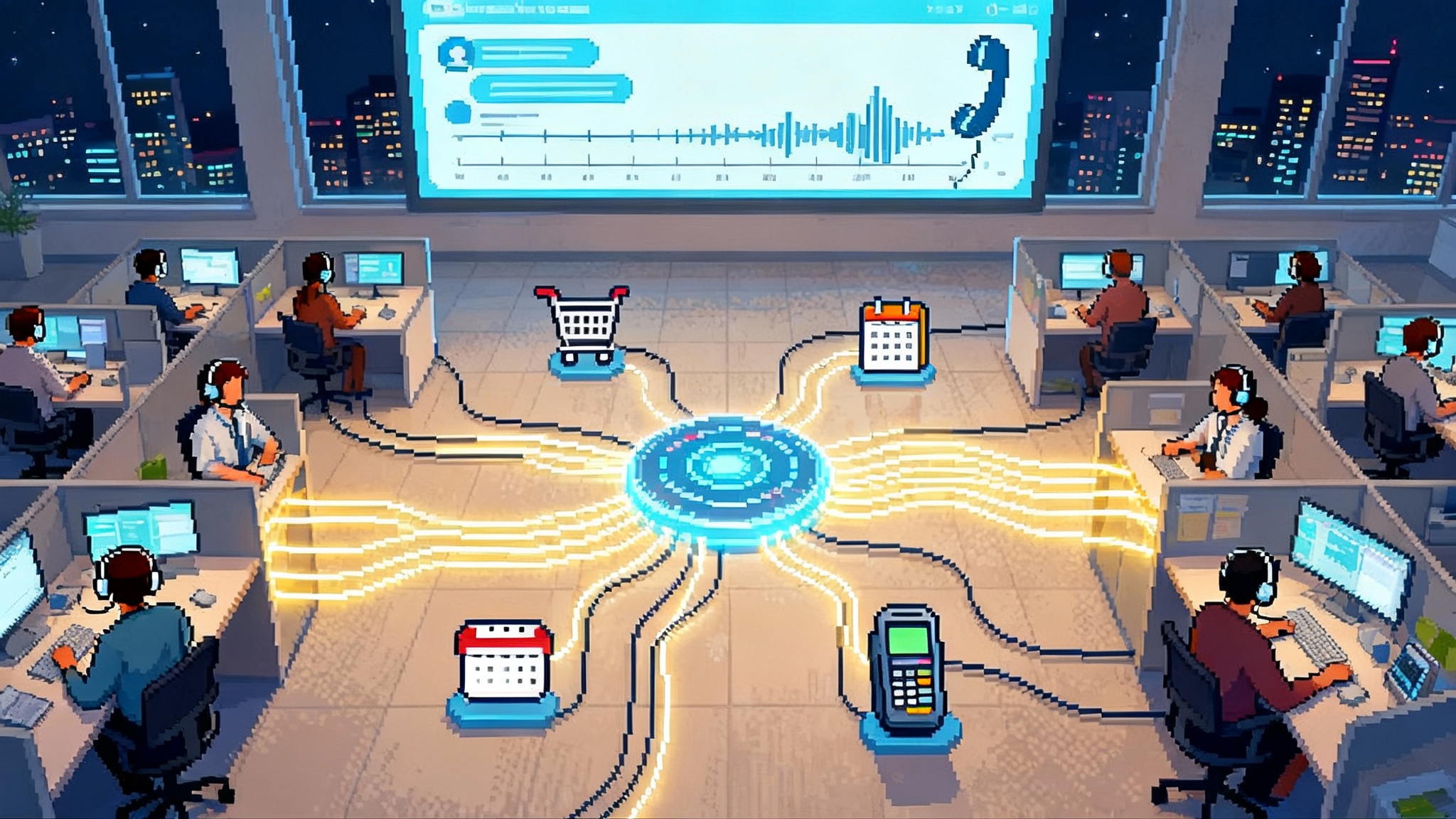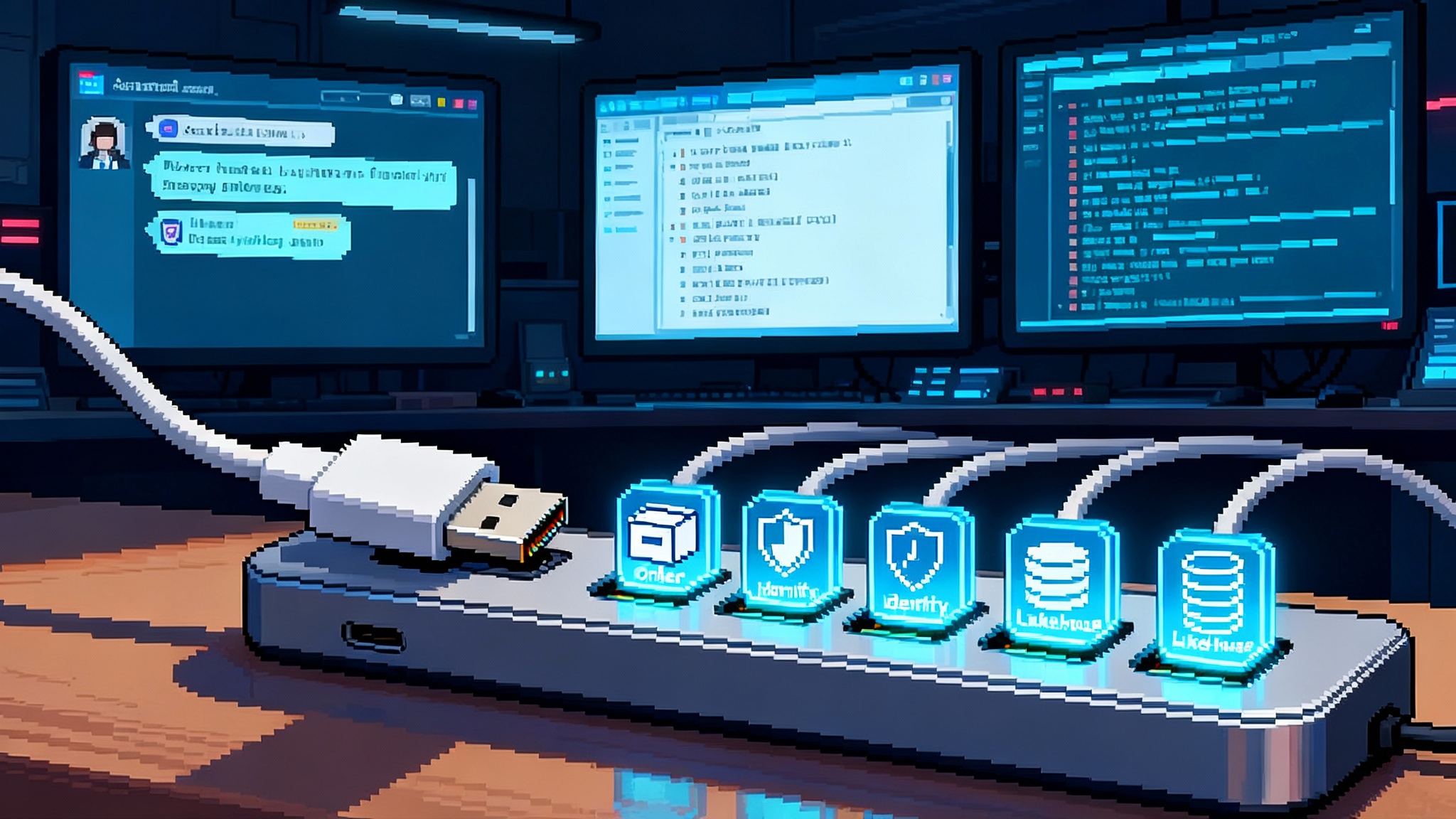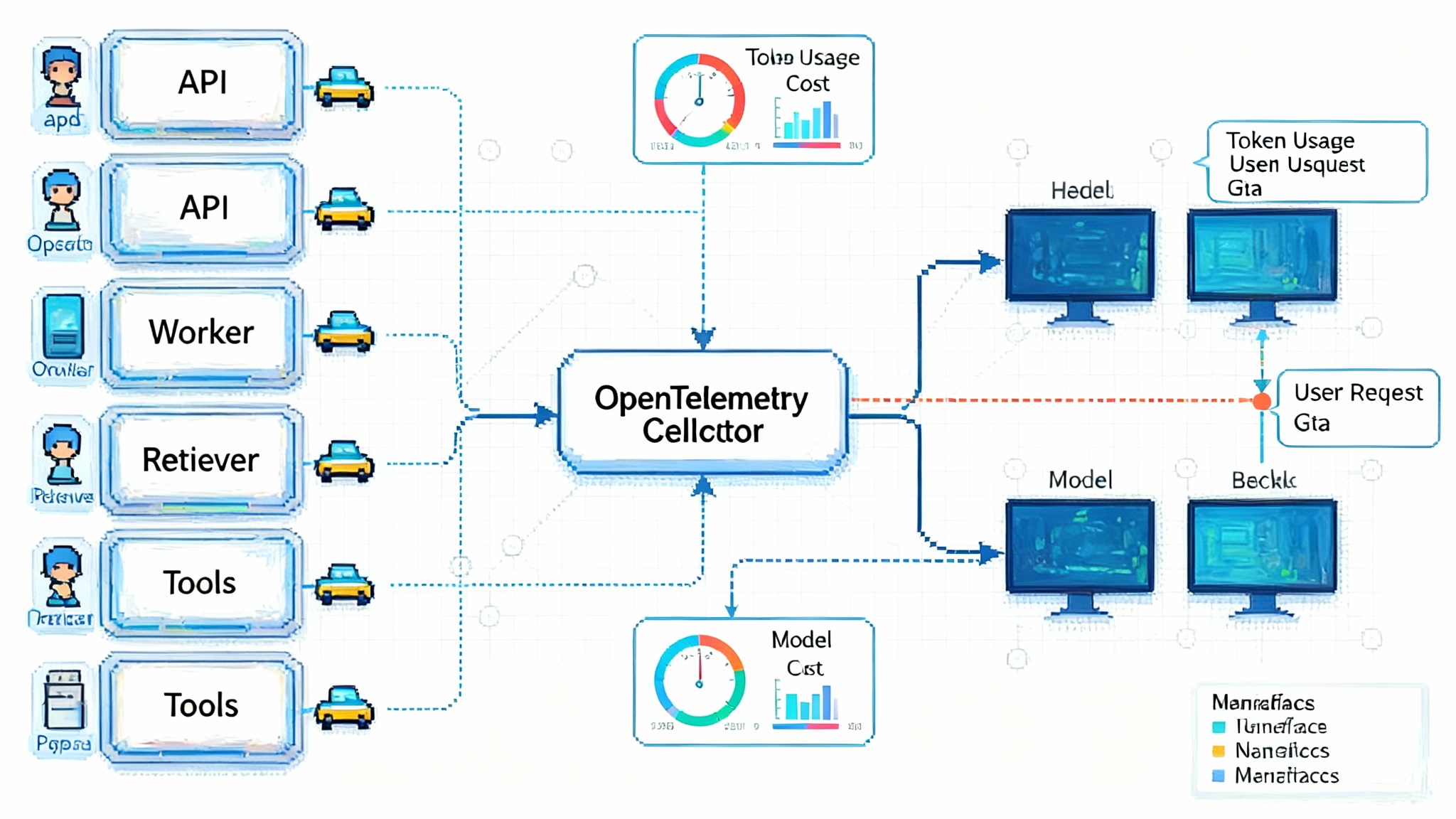Dialpad’s agentic AI makes CX the first autonomy beachhead
Dialpad is positioning customer experience as the first real beachhead for autonomy. We break down how reusable Skills, Workflows, secure connectors, and omnichannel context can reset containment and handle time economics.

Why CX is the first autonomy beachhead
Customer experience has all the ingredients for practical autonomy today. Interactions arrive in high volume. Intents repeat across millions of calls and chats. Success is measurable through established metrics like containment, first contact resolution, and handle time. Add mature telephony, contact routing, and CRM systems, and you get a fertile proving ground for agentic AI that does real work rather than demo theatrics.
That is why positioning customer experience as the first autonomy beachhead makes sense. The promise is not just better answers. The promise is autonomous resolution across voice and chat with guardrails and auditability that enterprises require. In this model, human agents become orchestrators for the edge cases while agentic systems shoulder the high frequency tasks with speed and consistency.
From chatbots to agents that act
Traditional chatbots were designed to answer questions. Agentic AI is designed to get things done. The difference shows up in four capabilities that compound when combined.
1. Reusable Skills instead of brittle intents
Reusable Skills capture the atomic steps that power resolution. Reset a password. Check an order. Schedule a return. Update an address. Each Skill bundles a clear input schema, a policy for authentication and consent, the side effects required to complete the action, and the observable output. Because Skills are portable, one definition can serve voice, chat, and email. That breaks the old pattern of building one flow per channel and watching maintenance costs explode.
2. Workflows to chain Skills into outcomes
A Workflow stitches multiple Skills into a complete outcome. Think of it as a play that can adapt to context. If a return is past policy limits, route to a courtesy credit. If the customer is high value, offer proactive shipping. If identity verification fails, request a one time code. Workflows allow deterministic rails where compliance demands it and agent autonomy where it helps speed resolution. They also create a single place to improve the experience without editing five different flows.
3. Secure connectors for real business actions
Answers do not move money or change records. Connectors do. Secure connectors bridge the agent to CRMs, ticketing platforms, order management, billing, and identity systems. They enforce the contracts that keep actions legal and auditable. The right design avoids long lived credentials, uses least privilege scopes, and logs every call with correlation IDs. That is how you make sure an agent can cancel a subscription when allowed and never when it is not.
4. Omnichannel context as a first class input
Resolution depends on context. What did this person try already. What promises were made last week. Which device are they on and what language do they prefer. An agentic system that blends past tickets, call transcripts, and purchase history can skip redundant questions and move straight to action. The same context should follow between voice and chat so the customer never has to start over. That is how autonomy feels like service rather than a maze.
The new math of containment and handle time
Contact centers have always managed two core levers. How many interactions are resolved without a human. How long does it take to resolve the rest. Agentic AI changes both at once.
- Containment rises when agents can actually complete tasks instead of handing off to a person.
- Average Handle Time falls because agents that reach a human arrive with context, summaries, and proposed resolutions.
- Customer effort plummets when context and action are unified across channels.
The result is a double compounding effect. More inquiries end without a human and those that do reach a human are faster to finish. Cost per resolution goes down while satisfaction goes up. That is the beachhead effect in practice.
What good looks like in production
You do not need science fiction to see value. You need a crisp definition of done and observable progress. Here is a practical checklist for a credible agentic rollout.
- Outcome first. Pick three repetitive outcomes that touch real systems. Password reset, order status, and address update are classics. Instrument each with a baseline and a target.
- One Skill per outcome. Define input validation, authentication rules, side effects, and expected outputs. Document failure codes. Publish a test harness that can run the Skill without the full stack.
- One Workflow that branches. Add policy handled paths. Decide when to ask for human review. Encode the escalation triggers upfront and allow tuning by configuration, not code.
- Connectors with least privilege. Scope each connector to the minimum action set. Rotate credentials automatically. Log all writes with request IDs and human readable audit notes.
- Omnichannel context store. Capture conversation state, identity, and history in one place. Make it queryable within latency budgets for voice and chat.
- Safety harness. Add rate limits, redaction, PII detectors, and an allow list for actions. Ship with instant kill switches.
- Observability from day one. Monitor tool calls, success and failure codes, latency, and user sentiment. Use statistically sound holdouts to prove lift.
For deeper background on how agents operate beyond single screens and into real world contexts, see our take on agents moving off screen. If your environment leans heavily on UI automation, pair these ideas with the pattern we covered in clicks across every screen. And to keep trust high as you scale, wire up LLM observability with OpenLIT.
A reference blueprint for contact center autonomy
Below is a blueprint you can adapt. It assumes a single brain that plans, a set of Skills that act, and a policy layer that governs.
- Ingestion layer. Voice, chat, email, and social channels flow into a unified router. Normalization handles transcription, language detection, and PII scrubbing before anything touches planning.
- Planner. A planning model maps intents to outcomes and chooses the next best action. It uses constraints from policy and risk to narrow the search space. It requests context and calls Skills through a broker rather than directly.
- Skill broker. This service exposes Skills as typed tools with rate limits and contracts. It maps an intent like fetch order to a specific connector call. It retries safely and tracks idempotency keys for all writes.
- Connectors. Each connector implements a narrow set of operations against a single system of record. Connectors sign every request, include correlation IDs, and never log secrets. They return explicit failure codes instead of vague errors.
- Context store. The store merges CRM, ticketing, and prior conversation state for low latency reads. It caches aggressively with time to live rules and purges sensitive data on a fixed schedule.
- Policy and consent. A central policy engine enforces what can be done when. It checks authentication level, geography, customer segment, and regulatory flags. It issues one time grants for sensitive actions and requires human review where needed.
- Observation layer. This layer collects traces, tool usage, and user feedback. It powers model evaluation, safety alerts, and cross channel dashboards.
Each piece must be separately testable and deployable. The planner should work against mocked Skills. The broker should fake connector responses. The observation layer should add no more than single digit milliseconds to latency.
Guardrails that do not get in the way
Enterprises do not adopt autonomy without credible guardrails. The trick is to add them where they matter without smothering the system.
- Authentication as a capability. Treat identity proofing as a Skill with its own metrics. Support multiple factors and fallbacks. Never allow sensitive actions without a fresh proof.
- Principle of least action. Give each Skill exactly the permissions it needs. If a Skill can only create returns, it should be impossible for it to issue refunds.
- Human approval at the right points. Use human in the loop for irreversible or reputationally risky actions. Auto approve repetitive, reversible actions with strong logs.
- Redaction by default. Scrub transcripts, logs, and prompts for PII before storage. Keep a narrow, encrypted vault for data that must be retained.
- Observability designed for agents. Track the plan and the tools the agent tried, not just the final transcript. That is how you debug jars instead of chasing ghosts.
The pilot plan that actually scales
Most pilot programs fail because they chase a perfect demo instead of a shippable slice. Use this plan to focus on outcomes and learning speed.
- Start with two outcomes you can own end to end. Put real connectors on day one. No stubs in production.
- Ship under controlled traffic. Route 5 percent of eligible volume to start. Increase to 20 percent after two successful weeks. Hold out a control group.
- Make the planner boring. Prefer deterministic rails and simple planning over cleverness. Expand autonomy once guardrails and audit are proven.
- Pay the observability tax early. Instrument traces, tool calls, and user feedback. Add dashboards that mix business and technical metrics.
- Write playbooks as code. Express policies, escalations, and service levels in configuration that lives next to code, not in a slide deck.
- Rotate one new Skill per week. Keep change small and steady so you can attribute improvements correctly.
Metrics that show real progress
Leadership will ask for proof. Show it with the metrics that matter and measure them the right way.
- Containment rate. Count sessions that complete the intended outcome without a human. Disallow cheap wins like dead ends or customer abandonment.
- Average handle time. Measure both fully autonomous sessions and human assisted ones. Report the blended impact and the distribution to catch outliers.
- First contact resolution. Track whether customers reopen issues within seven days. Autonomy that bounces back is not resolution.
- Customer effort score. Ask how easy the interaction felt on a five point scale. Segment by channel to see where friction hides.
- Agent assist lift. When a human is in the loop, measure the time saved by context summaries and suggested actions.
- Safety and compliance. Report authentication success rates, failed policy checks, and redaction coverage.
Run weekly reviews where failures are celebrated for the lessons they provide. Keep a backlog of defects discovered through traces and fix the ones with the highest frequency first.
What changes for teams
Autonomy does not eliminate human agents. It upgrades the job. Teams shift from repetitive work to judgment and relationship work. The skills that matter most become:
- Policy and empathy. Knowing the edges of what the system can do and when a rule should bend for a better outcome.
- Triage and orchestration. Taking control when a complex case arrives and steering the system rather than fighting it.
- Feedback and improvement. Turning frontline observations into new Skills and better Workflows.
Leaders should redesign incentives to match. Reward the creation and maintenance of reusable Skills. Recognize agents who reduce repeat contacts by improving Workflows rather than taking more calls.
Buying questions that separate platforms from point tools
If you are evaluating agentic platforms for contact centers, carry these questions into your RFP.
- Skills as first class objects. Can business owners understand, test, and reuse them across channels without code changes.
- Typed connectors with least privilege. Do connectors expose strongly typed operations, handle idempotency, and log writes with correlation IDs.
- Omnichannel context. Does the system preserve identity and state across voice and chat. Can it recall past promises and tickets in real time.
- Workflow flexibility. Can you combine deterministic steps with autonomous planning and swap policies without redeploying models.
- Observability. Can you trace every tool call and see the plan attempts. Are redactions provable and reversible only by a small, audited group.
- Safety controls. Are there kill switches per Skill and per channel. Can you turn off risky actions in seconds.
- Change management. How do you ship a new Skill safely. Can you run A or B tests and canary releases without a migration day.
How this ties to the broader agent wave
Contact center autonomy is a visible front in a larger shift. Agents are moving out of single apps and into real world tasks that cross channels and systems. That arc echoes the trends we highlighted in agents moving off screen. It also benefits from techniques that let agents operate when APIs are missing, like the approach in clicks across every screen. None of this scales without robust telemetry, which is why we recommend wiring LLM observability with OpenLIT before traffic surges.
The bottom line
Customer experience is where autonomy can pay for itself first. Reusable Skills, adaptable Workflows, secure connectors, and omnichannel context turn chatbots that answer into agents that resolve. When you instrument the right metrics and pilot with discipline, containment rises, handle time falls, and customer effort drops. That is the shape of the autonomy beachhead. The next step is choosing two outcomes and putting them into production with guardrails and proof. Momentum will follow.








